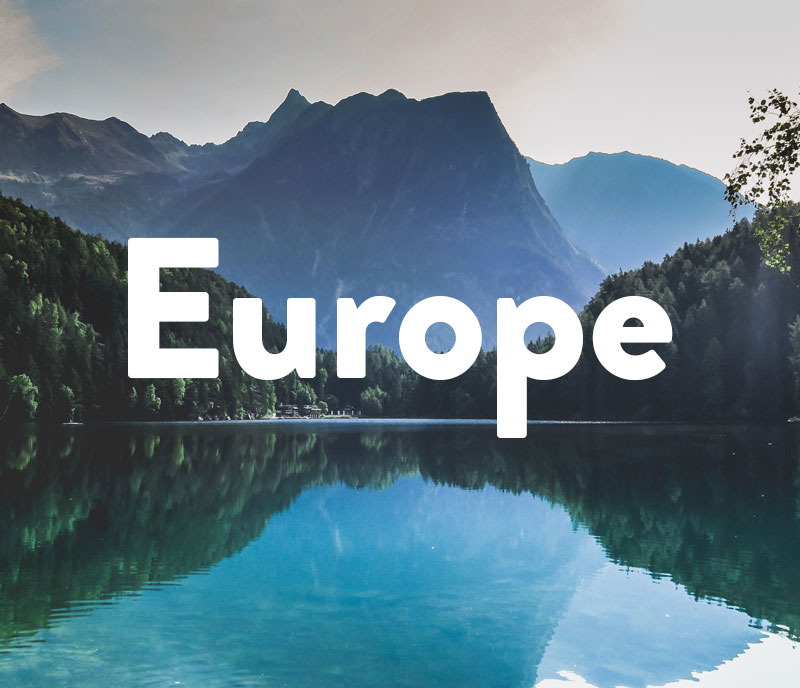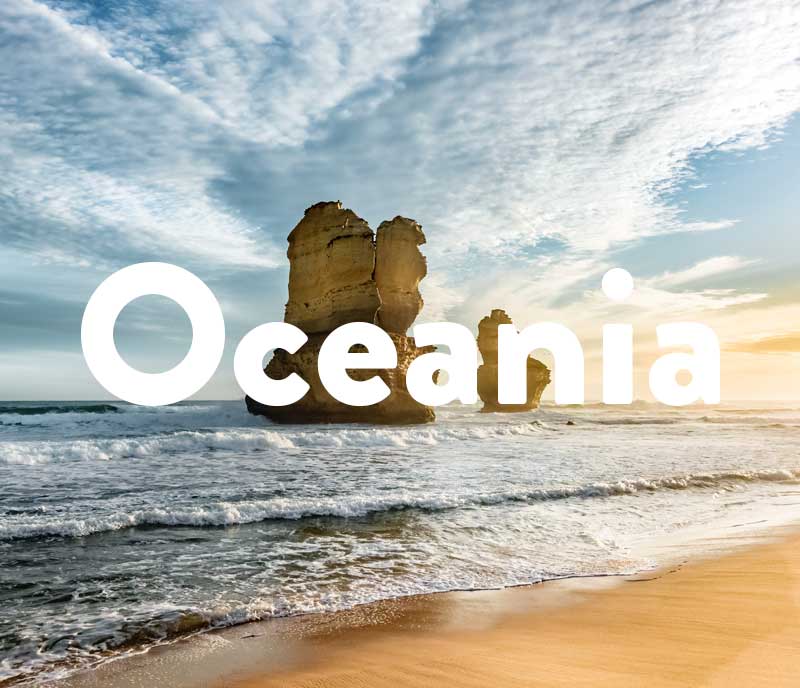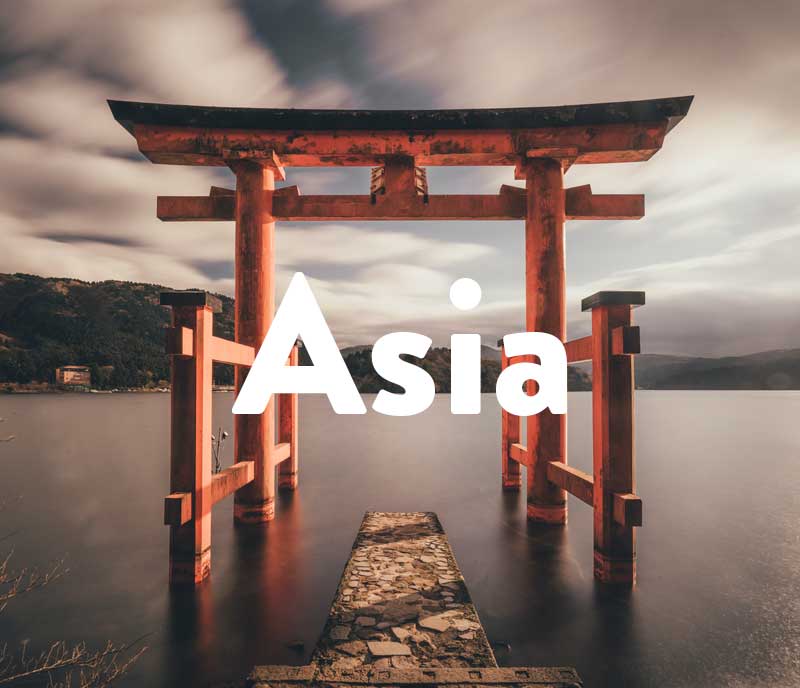Papua New Guinea is without a doubt a gorgeous destination. Despite the fact that comparatively little is known in general about this country, it’s actually the third largest island nation in the world. More than 800 languages are actively spoken among the culturally diverse population. Nature impresses visitors with dense rainforests, lonely beaches and high mountain peaks. All of this makes Papua New Guinea a fascinating travel destination for adventurous spirits.
Table of Contents
- The Key Info
- The Country in Numbers
- The Five Largest Cities
- Top Tourist Attractions
- When To Travel
- Safety for Travelers
- Important Holidays
- Visa
- Currency
- Packing List
- Dos and Don’ts
- Secret Blogger Tips
- Top Instagrammable Places
- Fun Facts
Dive into our (free) travel guides below!
.
.
.
.
.
.
.
.
The Key Info
After Indonesia and Madagascar, Papua New Guinea is the third largest island nation in the world in terms of area. This huge island is also extremely remote: the shortest distance between Germany, for example, and Papua New Guinea is no less than 13,577 kilometers as the crow flies. If you still want to overcome this enormous distance (and you should!), you will find impressive jungle landscapes, beautiful deserted beaches, great diving spots, high mountain peaks and volcanoes, as well as diverse communities of peoples.
Well over 800 languages are spoken in Papua New Guinea – a different ethnic group is found in almost every valley.
Papua New Guinea was also a significant location in World War II. So you’ll find well-preserved wrecks from the Second World War which you can explore on the island, both underwater and hidden in forests as well as on plantations.
Papua New Guinea in numbers
- Stretching 462,840 square kilometers, Papua New Guinea the second largest island in the world after Greenland.
- More than 8.2 million people live on this island.
- 839 different languages and dialects are spoken in Papua New Guinea.
- The population of Papua New Guinea consists almost exclusively of Christians. Only 0.3% of the population are listed as Baha’i.
- Papua New Guinea only gained independence from Australia in 1972.
The 5 Largest Cities in Papua new Guinea
#1 Port Moresby
The capital of Papua New Guinea is Port Moresby. The port city has 364,000 inhabitants and serves Papua New Guinea as gateway to the world. The international airport is also located here, as is the most important port in Papua New Guinea. Both the commercial center and some wonderful beaches are in Port Moresby too, including the idyllic Ela Beach.
Port Moresby is located in a large bay, where the Moto indigenous people settled down a good two thousand years ago. This was probably the reason why the British researcher and namesake John Moresby set up a branch for his research here in 1873. Over the years a larger settlement emerged, which finally became the capital of Papua New Guinea in 1884.
Port Moresby is not exactly a city that can be described as particularly liveable. In 2018, Port Moresby was ranked 136th among 140 cities surveyed in a ranking by The Economist Intelligence for quality of life.
#2 Lae
With 148,934 inhabitants, Lae is the second largest city in Papua New Guinea. It is located in the province of Maroba on the northern coast of the country. During World War II, Lae was largely destroyed in the Pacific War. The reconstruction brought a certain upswing in the region – there is an important industrial center as well as several hotels, clubs and golf courses. The showpiece of this city is the botanical garden, which covers over 100 hectares. Here, you can witness the enormously diverse flora of Papua New Guinea.
#3 Wewak
Wewak has barely 40,000 inhabitants – but as the third largest city in Papua New Guinea it is not of minor importance. It plays a vital role for the foreign trade of the Seppic province especially. The port is also the port of call for numerous cruise ships that stop in Papua New Guinea. The Sepik River, on which tourists can take impressive river trips through the jungle of Papua New Guinea, is best reached via Wewak. Close to the city is Cape Wom – a historically significant place where the Japanese army was finally defeated by Australia on September 13, 1945 in the course of the Second World War. War crimes also took place here – several cases involved cannibalism.
#4 Madang
Not far from Wewak is Madang, another small town in the north of the island of Papua New Guinea. This city was founded by the German explorers, Otto Finsch and Eduard Dallmann, who founded a plantation there in 1886 as part of an expedition. This is why this city also has a traditionally German name: Friedrich Wilhelmshaven. To this day, you can see evidence of these bygone times when you visit Madang. There are a few houses and buildings in the city that are built according to traditional European architecture.
Madang is considered one of the most beautiful cities in the South Pacific, and offers numerous beautiful parks, golf courses and some wonderful beaches that invite you to linger. The highlands can also be easily reached from Madang.
#5 Mount Hagen
Mount Hagen will particularly interest you if you’re a mountaineer or ready to venture into expeditions into the interior of this impressive island state. Mount Hagen has its own airport and is the commercial center of the highlands of Papua New Guinea. Many tourists stop here before taking their trips to the mountains of Papua New Guinea. The climate is pleasant due to the altitude – the city is 1677 meters above sea level.
TOP Tourist Attractions
Papua New Guinea is hands down one of the most adventurous travel destinations in the world. For tourists, the country is not necessarily considered ‘developed’. But for some travelers that is precisely what makes it so attractive: Unspoilt areas and sights that have so far been largely spared mass tourism:
#1 Kokoda Wanderroute
The Kokoda hiking route is one of the most demanding in the tropics. This multi-day hike through rainforests, deep gorges and over high mountain peaks is not only challenging, but also historically exciting. Because important battles in World War II once took place here.
#2 Madang Island
Island hopping in the Madang Islands is a real boon for any fans of pristine beaches and uninhabited islands. This natural wonder is perfect for people who love diving or who want to relax on pristine beaches. Divers can discover sunken shipwrecks and underwater planes as unique monuments of the battles in World War II that took place here between Japan and Australia.
#3 Mount Wilhelm
Mount Wilhelm is the highest peak in Oceania at more than 4509 meters above sea level. This mountain is relatively demanding and can only be tackled with the best equipment after a two to three day hike.
#4 Hailiku Village Tour – with cave exploration
An adventurous visit to the Hailiku village harbors some great surprises: Located in the middle of the jungle, there are some exciting caves that are worth exploring. A real insider tip for adventurers.
#5 Talasea Airstrip
The Talasea Airstrip ‘graveyard’ is located on land that is now used as a palm oil plantation. Two World War II fighter planes that once crashed here are left here as they were found
Safety for Travelers
Papua New Guinea is not necessarily a particularly safe holiday destination. The big cities all contend with high crime rates. Another aspect that should not be disregarded is the poor accessibility of various sights due to poor traffic routes. So if you are traveling in Papua New Guinea, you should pay particular attention to your health. Because in the event of an accident it could take some time to get to a hospital.
LGBTQ
For the LGBTQ community, Papua New Guinea is not exactly an ideal place. Same-sex sexual activity is illegal in Papua New Guinea and can be punished with up to 14 years in prison, although this law is rarely enforced. However, there are reports of discrimination in everyday life.
Women
Amnesty International’s annual report contains strong criticism of Papua New Guinea for violence against women and girls. Unfortunately, sexualized and gender-based violence against women is widespread in Papua New Guinea. It is not uncommon for women to be accused witchcraft, and even of practicing polygamy. However, there should be hardly any restrictions for female tourist.
BIPoC
In Papua New Guinea, travelers hardly have to struggle with racism – or at least we couldn’t find any evidence to suggest so. Perhaps this is in part because Papua New Guinea itself has a highly diverse population.
Feiertage in Papua-Neuguinea
- New Year: January 1st
- Easter Saturday
- Easter Sunday
- Easter Monday
- Queen’s Birthday: June 8th
- National Day of Remembrance: July 23
- National Day of Repentance: August 26th
- Independence Day: September 16th
- Christmas: December 25th
- Boxing Day: December 26th
Visa for Papua New Guinea
For much of the EU, the visa situation has recently improved significantly. Upon arrival, travelers receive a “Visa on Arrival”, which is free of charge and is valid for 60 days.
Currency in Papua-Neuguinea
The national currency of Papua New Guinea is the kina. A kina is divided into 100 Torahs. A kina is currently around 26 euro cents. The following coins are currently in circulation in Papua New Guinea: 5, 10, 20, and 50 Torah and 1 and 2 Kina. There are also banknotes in the form of 2, 5, 10, 20, 50 and 100 kina.
Dos and Don’ts in Papua-Neuguinea
When traveling to a foreign country, it makes sense to get wise about the particularities of the culture in advance. That way, you might be able to avoid one or two faux pas.
| Dos | Don’ts |
| Papua New Guinea vacationers should be laid back about punctuality. People here don’t take it too seriously. | Papua New Guineans are proud of their nation. So if you are tempted to criticize the country, best think twice or avoid it entirely. |
| Respect for the elderly is just as important in Papua New Guinea as it is in many other countries. | In Papua New Guinea, care should be taken in social situations not to put undue pressure on people. For example when it comes to alcohol. |
| If you want to criticize a Papua New Guinean, then the best way to do it is through someone else. | In Papua New Guinea, nobody should be called a “Kanaka”. This word, which translates as “pipe cutter”, is considered very degrading in Papua New Guinea. |
Your Packing List Must-Haves
Papua New Guinea is an adventurous country that exists far away from mass tourism. Accordingly, a trip to this island should definitely be well prepared. This includes, for example, good footwear, especially if you want to climb one of the high peaks. You should also have a flashlight with you, as well as clothing for cooler days. On the high plateaus of Papua New Guinea, the nights can get quite fresh.
Secret Blogger Tips
- A real insider tip for travelers to Papua New Guinea is Mount Tavurvur, an active volcano. There are hot springs and crater lakes – an unprecedented natural spectacle. – Travel Lookouts
- In the Massim Museum of Alotau you can learn a lot about the importance of the island in World War II.
- Discover the Talasea plane wrecks. They are still in the same place where they crashed. For this you have to go on a muddy road and you definitely need a four-wheel drive car. The jungle grows around the wrecks, which makes them a particularly extraordinary backdrop. – Journeyera
Top Instagrammable Places
#portmoresby (51k Posts)
#madang (35k Posts)
#kokoda (29k Posts)
#sepik (5k Posts)
Fun Facts about Papua New Guinea – did you know..?
- With more than 830 languages, Papua New Guinea is the country home to the most languages spoken anywhere in the world.
- Papua New Guinea was named after the country Guinea, which is located in Africa.
- The only known poisonous bird in the world lives in Papua New Guinea: the so-called Hooded Pitohui.
- Papua New Guinea is extremely diverse ethnically. More than a thousand different ethnic groups live in this country.
Not done reading..?
- Dresden and Saxon Switzerland – The perfect weekend trip
- Vacation in Carinthia: Experience the sunny side of the Austrian Alps
- Craft Unforgettable Postcards: Say Goodbye to Writer’s Block with AI (Coming soon!)
- Discovering the Charm of San Antonio: 5 Hidden Must-Visit Places
- Off to a Texas adventure: Our trip to San Antonio, Fredericksburg and Bandera – Part 2







